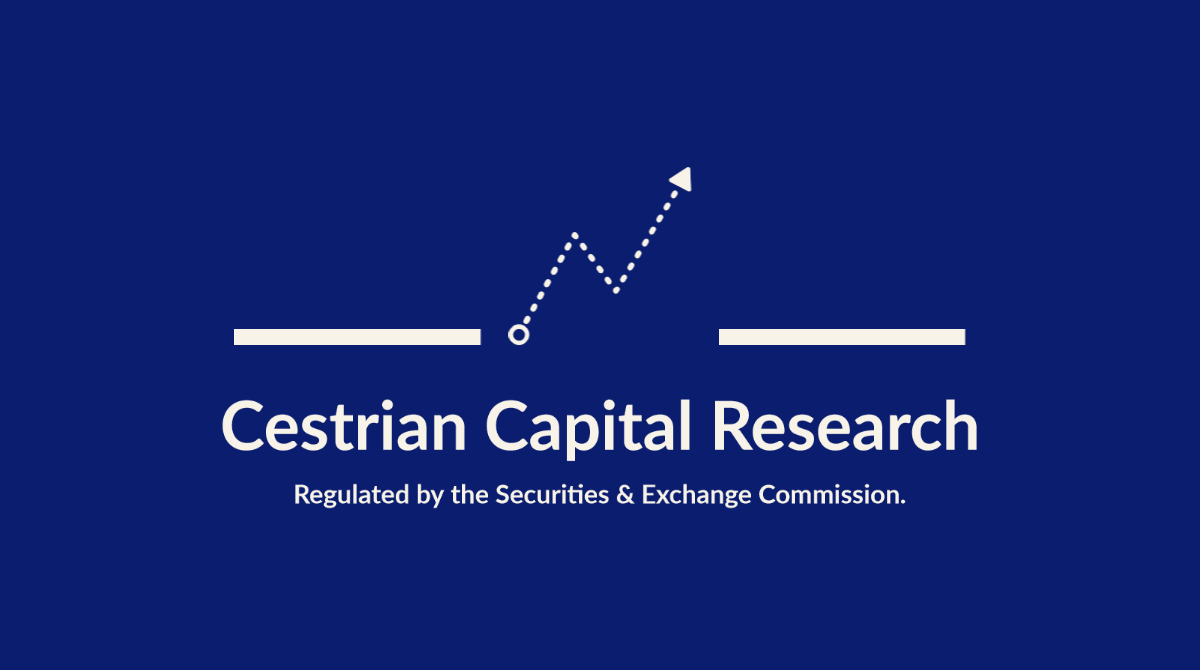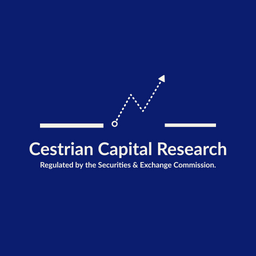Market On Open, Wednesday 6 April

DISCLAIMER: This note is intended for US recipients only and, in particular, is not directed at, nor intended to be relied upon by any UK recipients. Any information or analysis in this note is not an offer to sell or the solicitation of an offer to buy any securities. Nothing in this note is intended to be investment advice and nor should it be relied upon to make investment decisions. Cestrian Capital Research, Inc., its employees, agents or affiliates, including the author of this note, or related persons, may have a position in any stocks, security, or financial instrument referenced in this note. Any opinions, analyses, or probabilities expressed in this note are those of the author as of the note's date of publication and are subject to change without notice. Companies referenced in this note or their employees or affiliates may be customers of Cestrian Capital Research, Inc. Cestrian Capital Research, Inc. values both its independence and transparency and does not believe that this presents a material potential conflict of interest or impacts the content of its research or publications.
B Wave Trauma
by Alex King, CEO, Cestrian Capital Research, Inc
We all have our neuroses. For some people it’s clowns, others, thunderstorms. For me, it’s B-waves. Who hurt me with a B-wave? I don’t know, as I am wary of what may happen to my psyche if I investigate this too much, but I think it may have something to do with the countertrend rally in Q1 2022 which headfaked me into thinking the selloff was done. Which, clearly, it wasn’t, and so a rapid about-turn was required.
A B-wave is a fancy name for what might be happening at present, namely a countertrend rally during a temporary correction within an overall bull market. Market puts in an initial drop - that’s an A-wave. Bounces, B-wave. Then the final drop, C-wave. The wise investor hedges until the C-wave is done (evidence - a bottoming pattern and the beginnings of high volume accumulation) and then deploys capital back into the long side. The headfaked investor piles in as the B-wave peaks, thinking “we’re all done here with this correction, off to the races!”.
One can never be sure, of course, exactly where one is in any market environment - all you can do is check progress against typical price and value patterns, and know how to course-correct if you get it wrong. As long as you don’t go max-levered-long at the highs or max-levered-short at the lows, errors can usually be corrected as long as you have the psychological and emotional ability to say “oops, I got that wrong, time to switch it up”.
This course-correction method is why I favor the hedged trading method. Firstly, you have the tools to make money in bull and bear markets alike, so you need fear nothing. Secondly, if you aren’t sure if you were right or wrong, hedging suspends time in your account whilst you figure it out. And thirdly, if you were wrong you can add capital to the “right” side and get back in the game - either taking modest losses on the “wrong” side or deciding to hold the “wrong” side as well as the “right” side, until the market comes back your way again.
This sounds difficult but in truth it’s a whole lot easier than hoping you called the market correctly, which in my experience comes with a good deal of worry. If you know how to course-correct, your stress levels drop and with that your decisionmaking ability improves such that you are a little less likely to be wrong in the first place. And such is the low bar for success in investing, being “a little less wrong” puts you at a big advantage to most market participants. I point you to the machinelike tennis supremo Roger Federer, who in 2024 declared that his career average win rate on a point-by-point basis was 54%. He won a whole lot of stuff by being just a little bit less wrong than his opponent. And more than that, he explained that the knowledge that his next point was 46% likely to be wrong gave him very low stress - losing a point wasn’t a tragedy, it was a 46 in 100 probability. Onto the next point, which looking forward had a 54 in 100 chance of being a winner.
This, I believe, is how to think about investing if you want to perform well over a long period of time without developing ulcers, a cocaine habit, or chronic stress.
We teach the hedged method all the time in our Inner Circle service. If you’d like to find out how to invest more like Roger Federer, and less like Hunter S. Thompson, take a look.

Sometimes Stocks Are The Economy Though
The economy is to the S&P and the Nasdaq as fundamentals are to the price of Apple, or Microsoft or whatnot. Most of the time it doesn’t matter - stocks are going to go up anyway.
But when it matters, it really matters, and usually it’s when things turn bad.
The measures used in official statistics are all backward-looking lagging indicators. This is why we have the business cycle, because everyone from the Fed to banks to investors to CEOs reacts too late and reacts too hard. That’s why the economy and the market is boom-and-bust.
If you want to know when the next bust is coming, you need to know which real-time indicators to look for.
I’m delighted to invite you to a FREE, LIVE webinar on MONDAY 11 AUGUST at 1615 EASTERN where Henrik Zeberg, Head Macroeconomist at Swissblock, will be talking to us about how to spot the next turn in the market. (Spoiler alert: he thinks the economy has already turned).
You can register here.
Next up - our daily subscriber-only take on the US equity indices, volatility, bonds, oil, crypto, and key sector moves.

